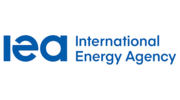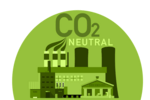News Release from International Energy Agency (IEA)
Wind Industry Profile of
International "collaboration gap" threatens to undermine climate progress and delay net zero by decades
- Against the backdrop of the energy crisis and the threat of a global food crisis, expert authors urge leaders at COP27 to follow through on actions that would accelerate progress towards net zero emissions by decades, cut energy costs and boost food security for billions of people worldwide
- The inaugural report highlights growing momentum across key sectors, including a doubling of electric vehicles (EVs) sales in 2021 and a forecast 8% increase in global renewable capacity in 2022
- At COP26, 45 countries committed to make clean technologies the most affordable, accessible and attractive option in each major greenhouse gas emitting sector by 2030 under the ‘Breakthrough Agenda’
- Ahead of the US-hosted Global Clean Energy Action Forum, this is the first assessment of priorities for strengthened collaborative action and progress so far, produced by the International Energy Agency (IEA), International Renewable Energy Agency (IRENA) and the UN Climate Change High-Level Champions
- The Breakthrough Agenda Report sets out 25 collaborative actions to help make clean power, EVs, low-carbon steel and hydrogen, and sustainable farming the most affordable options as soon as possible
The first annual Breakthrough Agenda Report, requested by 45 world leaders, delivers a progress report on the actions needed to deliver on the historic clean technology commitment by governments representing two-thirds of the global economy. The Breakthrough Agenda, as the commitment is known, aims to align countries’ actions and coordinate investment to scale up deployment and drive down costs across five key sectors including – power, road transport, steel, hydrogen and agriculture.
Together, these sectors account for nearly 60% of global greenhouse gas (GHG) emissions today and could deliver the bulk of the emission reductions needed by 2030 in a pathway that would make a significant contribution to limiting global warming to a maximum of 1.5°C, in line with the Paris Agreement goals.
The report notes an increase in practical international cooperation in recent years, and progress in deploying the technologies needed, including:
- A doubling of EVs sales in 2021 from the previous year, to a new record of 6.6 million
- A forecast increase in global renewable capacity of 8% in 2022 – pushing through the 300GW mark for the first time and equivalent to powering approximately 225 million homes
- Forecast global electricity generation cost reduction of at least USD 55 billion in 2022, based on new renewable capacity added in 2021
However, the report also warns that far greater international cooperation is needed to get the world on track to meet its climate commitments.
“We are in the midst of the first truly global energy crisis, with devastating knock-on consequences across the world economy, especially in developing countries. Only by speeding up the transition to clean sustainable energy can we achieve lasting energy security,’’ said IEA Executive Director Fatih Birol. “Through international collaboration, we can make the transition quicker, cheaper and easier for everyone – on the back of faster innovation, greater economies of scale, bigger incentives to invest, level playing fields and benefits that are shared across all parts of society. Without this collaboration, the transition to net zero emissions will be much more challenging and could be delayed by decades.”
“The energy and climate crisis has exposed the weaknesses and vulnerabilities of a system heavily reliant on fuels of the 20th century. Anything short of radical and immediate action will ultimately eliminate the chance of staying on the 1.5°C path,” said Francesco La Camera, Director-General of IRENA. “The Breakthrough Agenda and our joint report sends a strong signal ahead of COP27 that greater international collaboration can amplify ambition and accelerate progress. Advancing the transition to renewables is a strategic choice to bring affordable energy, jobs, economic growth and a cleaner environment to the people on the ground.”
The report puts forward 25 recommendations for leaders to discuss at the Global Clean Energy Action Forum and the 13th Clean Energy Ministerial to be held in Pittsburgh, United States, from 21-23 September 2022.
These include:
- Demonstrate and test flexible low-carbon power systems to expand the range of solutions and increase the share of variable renewables
- Create new cross-border supergrids this decade to increase trade in low-carbon power, reduce emissions, improve energy security and enhance system flexibility
- Set up new international centres of expertise to channel finance and technical assistance to help coal-producing countries’ transition
- Agree a common definition and target dates by which all new road vehicles will be net zero, targeting 2035 for cars and vans and the 2040s for heavy duty vehicles
- Mobilise investment in charging infrastructure, including prioritised assistance for developing countries and harmonise international charging standards to drive investment and accelerate adoption globally
- Standards to boost the recyclability of batteries and supercharging research into alternative chemistries for batteries to reduce reliance on precious metals, such as cobalt and lithium
- Government policies and private-sector purchase commitments to drive demand and deployment of low-carbon and renewable hydrogen alongside standards to enable global trade
- Public and private commitments to purchase near-zero emission steel, and actions to level the playing field between steel producing nations
- Investment for agriculture technologies and farming practices that can cut emissions from livestock and fertilisers, expand availability of alternative proteins and accelerate the development of climate resilient crops
- International standards for monitoring and reporting on the state of natural resources on which agriculture depends, covering soil health, soil carbon content, and pollinator health
The report highlights that in addition to delivering urgent emissions reductions, stronger collaboration will both deliver a faster and a cheaper transition, while boosting jobs growth. Research from the IEA shows that without international collaboration, the transition to net zero global emissions could be delayed by decades. While new research cited by the report shows that some technology costs may decline by as much as 18% by 2030. And IRENA estimates cited by the report suggest an energy transition aligned with limiting global temperature increase to 1.5°C could create close to 85 million additional jobs by 2030 compared to 2019, more than offsetting losses of 12 million jobs.
“This report highlights the need to ensure affordable access to clean and green sources of energy for all. This is also a strong reminder on the need for a focus on implementation, which must be the priority at the national, regional and local level, in order to have the necessary impact globally as well as the need for mobilization of appropriate finance," said Dr Mahmoud Mohieldin, UN Climate Change High-Level Champion for Egypt.
“Countries with the thousands of non-state actors running the Race to Zero and Race to Resilience must collaborate more strongly to drive forward the transition to affordable zero emission solutions in each emitting sector of the economy,” said Nigel Topping, UN Climate Change High-Level Champion for the UK. “This is as essential for development as it is for avoiding dangerous climate change. Clear steps must be taken at COP27 to implement the Breakthrough Agenda commitment to collective action that makes clean technologies affordable and available to all who need them throughout the world.”
- Source:
- IEA
- Author:
- Press Office
- Link:
- www.iea.org/...
- Keywords:
- IEA, report, collaboration, global, international, COP27, climate goal, net zero, target, technology, clean energy




























